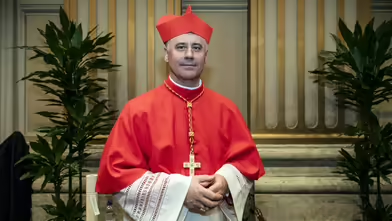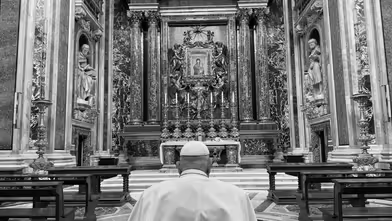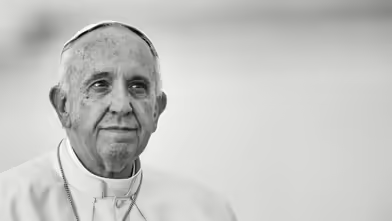Hier geht es zur deutschen Version des Interviews.
DOMRADIO.DE: How much of a surprise was it to you, that Pope Francis chose the Basilica of Santa Maria Maggiore to be his last resting place?

Archbishop Rolandas Cardinal Makrickas (Coadjutor of the Archpriest of Santa Maria Maggiore): The Holy Father was very familiar with this basilica, because he came here often. During his pontificate he visited the basilica before his apostolic visits, in total 126 times. During one of the meetings, the Holy Father said to me: 'Mary told me: Prepare your tomb'. He said he was so happy to know that Mary hadn't forgotten him.
He asked me to find the right place to prepare his tomb. We looked at some places and he approved of the place between the Sforza Chapel and the Pauline Chapel. There he wanted to have a very simple tomb, with only the inscription of his name and the cross that he had brought with him every day as a bishop and as a pope. The cross would be larger so that people could recognise it. So it was not so much a surprise, but it happened in a miraculous way, because it was the voice of Mary asking him to be here.
DOMRADIO.DE: How do you prepare for the funeral?
Makrickas: The liturgy will take place at St Peter's Square. Then there will be a long procession. In the Basilica, we are only preparing the tomb and the private funeral of Pope Francis will then take place here in the Basilica. All the organisation is done by the Vatican. We are just here, to carry out the will of the Holy Father.
DOMRADIO.DE: After the funeral, many pilgrims will visit the tomb of Pope Francis. How are you preparing for this mass of people?
Makrickas: Our basilica is small, so we have to organise the overflow of pilgrims into the basilica. Only a small number of people can enter at the same time. But we will act according to the situation. Everybody will need to have a little bit of patience and then be able to visit the tomb of Pope Francis.
DOMRADIO.DE: You knew Pope Francis very well. How do you feel now?
Makrickas: Of course there is sadness because we have lost a father and a Pope who led the Church for twelve years. But his death was also a sign of a real intervention from heaven, because he died on the second day of Easter and, having greeted everyone in St Peter's Square. He had the opportunity to bless and be greeted by the people for the last time.
Nobody can imagine a better way to leave this world than in friendship with so many people - after that great embrace in St Peter's Square and the blessing for the whole world and for Rome. So it is very inspiring. It is sad, but it was also a very light day because he left behind a nice example of a Pope, a shepherd and a Christian.
The interview was conducted by Sonja Geus.






